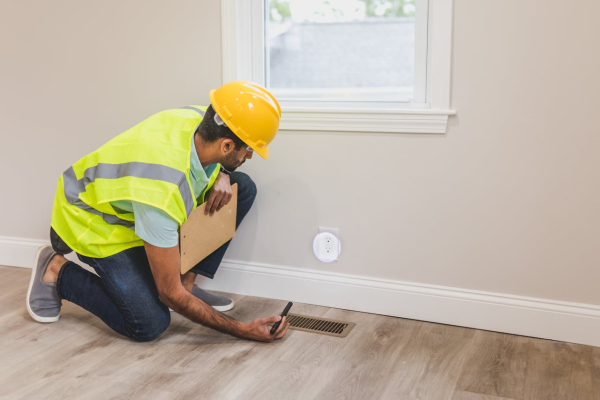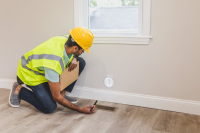When a British home starts to crack, an industrial slab goes out of level or a carriageway ripples after a wet winter, we often stare at the surface… but the real story is being told beneath our feet. In the UK—where shrink–swell clays, historic made ground, waterlogged zones and buried services abound—subsidence isn’t “bad luck”: it’s the symptom of ground that has lost structure, support or uniformity. Understanding what’s happening down there and acting with precision is the key to stopping damage and restoring safety.
First - diagnose properly (don’t guess)
Subsidence has many faces: fines washed out near watercourses or drains, loss of support beneath slabs, soft spots in platforms, embankments settling, voids in old fills, buried timber degrading, clays contracting in drought and expanding with rain. That’s why the starting point isn’t “inject for the sake of injecting”, but characterising the subsoil with tests that show where—and how much—to intervene: dynamic probing (DPM) to estimate in-situ resistance, laser levelling to monitor movement, deflectometry to understand pavement structure and—when the case calls for it—2D/3D electrical resistivity tomography (ERT) to identify washed-out zones, voids or weak layers without opening trenches. In real projects, ERT has located anomalous volumes and allowed us to fine-tune the treatment grid with millimetric precision; afterwards, post-treatment DPM confirms the increase in ground strength.
What solutions work—and when to use them
There’s no silver bullet. There are complementary technologies chosen according to the problem, depth and setting:
1) Expanding resin injections (shallow ground, clean and rapid underpinning)
Technical resins—applied with specific procedures such as Soil Stabilisation™ or See&Shoot®—fill voids, densify the bearing soil and can recover service levels with laser lift control (accuracy to tenths of a millimetre). It’s especially useful beneath industrial slabs, footways, urban pavements and dwellings when the problem lies within the top decimetres or first metre of ground. After intervention, deflectometry typically shows lower deflections and improved bearing capacity (PCN on airfields or stiffness on roads), enabling a swift return to service with minimal disruption.
Typical UK use-cases where it shines:
– Uneven slabs in logistics sheds and distribution centres (raised edges at joints, loss of support due to wash-out). Injection on a grid ~0.5–1 m below the slab restores soil–slab contact and corrects steps without demolition.
– Carriageways with soft spots and progressive depressions: staged treatment by depth (ERT+DPM to design), consolidating deeper washed areas first and finishing beneath the running surface to reduce deflections and restore uniformity.
– Airside pavements and areas under shear: treatment at the sub-base/ground interface with laser control to avoid unwanted lift, followed by deflectometry to verify the new PCN.
2) Pressed micro-piles (GROUNDFIX®) for structural loads
When significant loads are involved (new lifts, underpinning of point-loads, extensions, heavy machinery or pools that have settled), deep reinforcement with active micro-piles pressed to refusal and fixed to the foundation is the robust route. Executed with compact rigs, with negligible vibration, each element is validated by drive pressure (a real-time “load test”), and purpose-designed connections transfer the design load. Ideal for buildings in use and tight urban spaces—very common in the UK fabric—its versatility covers everything from lift pits to slabs with varying thickness and levels.
Typical cases:
– New or settled lift pits: controlled pressing and monolithic connection slab–pile using low-shrink grout and anti-punching plate.
– Swimming pools losing level due to irregular support: array of micro-piles beneath the shell, using the structure’s own weight as a reaction during pressing.
– Special foundations in industry (vertical lathes, heavy kit): sleeves and bespoke connections based on slab depth and pour phases.
3) In heritage and sensitive settings, precision above all
Riverbanks, historic walls, canals or listed gardens demand minimal impact, control and traceability. The ERT+DPM combo for design, plus line-and-level resin injection beneath existing foundations, allows consolidation without major dismantling or environmental impact, keeping spaces operational.
Why these techniques fit the UK so well
– Climate & soils: swings between dry and wet periods, with shrink–swell clays, aggravate differential settlement; resins tackle porosity and re-establish support where soil has lightened or “washed out”.
– Dense urban fabric: minimally invasive methods, no large demolitions, no crawler plant, working from inside or narrow courtyards, reduce neighbour nuisance and service interruptions.
– Operational continuity: in logistics platforms, industrial parks, airfields and roads, fast execution and immediate return to service cut economic losses; verification with deflectometry or laser control provides objective evidence.
Warning signs you shouldn’t ignore
Diagonal cracks at wall–opening junctions (doors/windows) that widen in dry spells.
Skirtings gapping, floors “on a slope”, or doors rubbing.
Stepped slab joints, vibration under pallet trucks or HGVs.
Pavement undulations or potholes that return after resurfacing.
Persistent infiltration near gullies, chambers or services.
Our 5-step workflow (for homes, industry or infrastructure)
Diagnosis: tech visit, pathology review, laser survey, DPM, and ERT if appropriate.
Design of the grid: define injection points and depths, or the number/length of micro-piles and connection details.
Controlled execution: minimal drill holes (Ø 12–30 mm), lances or sleeves, progressive injection with monitoring; or pressing with live pressure readings.
Verification: post-treatment DPM, levelling, deflectometry/PCN on pavements, and a clear report with volumes and final parameters.
Prevention: drainage recommendations, local re-pressing if future extensions arise, and monitoring if the client requests it.
Results you can measure
On pavements and roads, reduced deflections and recovered PCN after treatment are the “final exam” certifying structural improvement. On slabs, restored soil–slab contact and laser-measured re-levelling prove effective consolidation. On micro-piled underpinning, recorded pressing pressures for each element and the engineered fixings to the foundation guarantee design load transfer. Everything is documented in a clear technical report you can reuse with insurers, engineers and property managers.
A very British closing thought: act early, pay les
Subsidence rarely “cures itself”. The sooner the ground is investigated and the right technique is applied—resins for shallow soils, micro-piles for loads, or a combination—the lower the impact, indirect cost and downtime. Above all, you gain peace of mind: truly knowing what’s happening down there… and having solved it with proven, measurable and clean methods.








































